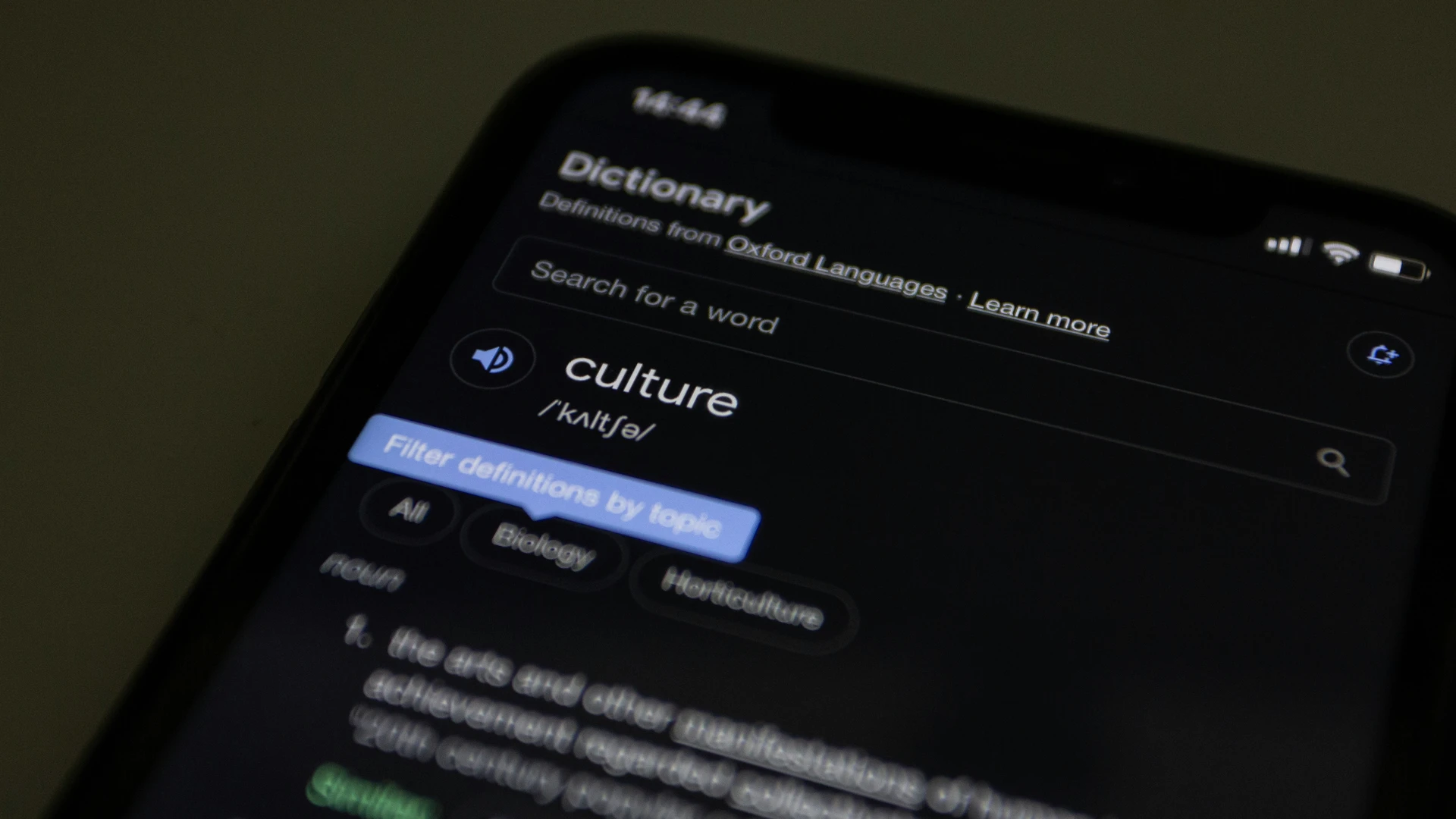Human writing in the AI era: 5 advantages
There’s been a lot of talk about robots and artificial intelligence replacing human jobs, from box office workers to cashiers. Could editors be next? While it may sound like science fiction, the reality is that computer programs have already written books, and many online articles could be generated by intelligent software.
Thanks to AI, content creation has evolved dramatically, enabling text to be produced quickly and data to be analyzed efficiently. However, what truly sets human writing apart is the creativity, emotion, and nuance that only humans can convey. Copywriters need not worry: in this article, we offer 5 reasons why.
1. Emotional connection with the client
Most customers prefer not to interact with faceless machines. Despite the rise of automated checkouts, the fact that supermarkets still employ cashiers says something. There will always be those who value human connections over convenience. One of the key advantages of human-created content is its ability to incorporate emotion. A content writer can tap into a customer’s feelings, encouraging purchases while building trust between the brand and the consumer.
No matter how advanced your software may be, it can never replicate the full range of emotions expressed by a human being. Computer-generated content will always come across as clunky, robotic, and monotonous compared to content crafted by individuals. This could ultimately make customers feel less inclined to trust the brand.
2. Critical thinking
AI relies solely on available online resources to provide information and make decisions. In contrast, human writers use critical thinking to solve problems through various cognitive processes. This enables them to analyze and synthesize information from a wide range of sources, integrate different perspectives, and generate a variety of potential solutions.
Critical thinking is essential in writing because it allows writers to evaluate information accurately, recognize assumptions, and identify potential flaws or inconsistencies. Additionally, writers possess the ability to communicate their ideas clearly and engagingly. Their skill in selecting the right words and constructing coherent texts enables them to convey complex concepts in an understandable way, while taking the reader on an emotional or intellectual journey.
3. Building your brand identity
Have you ever heard a robot tell a joke? Definitely not. No matter how advanced AI-generated content becomes, it will never grasp fundamental elements like tone of voice and brand identity. It's in your best interest to build a strong reputation with your customers, whether you're a tech-savvy company, a bustling grocery store, or a cozy downtown hotel.
A human copywriter can gain a comprehensive understanding of your brand and write accordingly. In contrast, a computer can only perform tasks it's been trained to do. The result is often the same bland copy churned out for thousands of other businesses, which is unlikely to help you stand out in a competitive market.
4. The right content at the right time
Repetition of AI-generated content can harm your brand and negatively impact SEO. Generic and repetitive content may come across as unprofessional and irrelevant to your target audience, while search engine algorithms reward original, high-quality content.
Sticking with generic content without staying up-to-date on current events can cause your website to appear outdated and irrelevant. On the other hand, incorporating seasonal content—such as gift ideas or festive recipes during the holiday season—can capture your audience's interest and boost your search engine rankings, making your site more relevant.
5. Compliance with Google's guidelines
Running a business and managing a website can be challenging, which might make it tempting to take shortcuts and rely on machine-generated content instead of human-created content. However, this approach can negatively impact your website's ranking on search engine results pages.
It's important to note that automatically generated content violates Google's guidelines, and Google may penalize pages that use this practice. AI-generated content is considered just as problematic as other tactics like keyword stuffing, cloaking, or implementing sneaky redirects, as outlined in Google's own guidelines.
In short, the concern that editors may be replaced by machines is understandable. However, it’s important to remember that while machines can be powered by human knowledge, no algorithm will ever replicate the unique ability of humans to tell stories and convey emotions. The poetry hidden in words remains a distinctly human prerogative.
How to write an SEO-friendly text: 3 useful tips
The web is like nature: only the best survive. Whether on blogs, company websites, or e-commerce platforms, quality writing is essential for driving traffic and achieving sales goals. SEO (Search Engine Optimization) is key to making your content visible in search engine results, increasing the chances that users will visit your site and purchase your products or services. In this article, we’ll share tips on how to write effective, SEO-friendly content.
The importance of keywords
Before we begin, it’s essential to clarify the topics we want to cover in our content. This step may seem obvious, but it’s crucial—without a clear understanding of the article's topic, we can’t move forward with keyword research. Keywords are the foundation of SEO, as they help users find the content they’re looking for via search engines.
To identify the best keywords for our website, we can use tools like Google Ads or SEMrush. Don’t underestimate this stage, as it’s one of the most important steps. Additionally, consider using "long-tail keywords"—combinations of words that help us target a specific audience, those who are most likely to be interested in the products and services we offer.
H1: Choosing the Title
The primary title of an article plays a crucial role in creating SEO-optimized content. Writing the H1 tag, as it's commonly called, can be challenging—it requires creativity, accurate information, and a solid understanding of SEO principles. For optimal results, choose a simple title that includes the main keyword. This will help your content rank higher in search engine results.
However, crafting an SEO-friendly title involves more than just using the main keyword. Here are some tips to improve your H1:
- Limit your title to a maximum of 70 characters to avoid penalties from Google;
- Use engaging phrases like “What,” “How to,” or “This is” as an introduction to the title;
- Include numbers, for example: “The 10 Best Strategies for Creating SEO-Friendly Content.”;
- Use a question/answer format to attract attention and make the title more engaging.
Following these tips will help you create a search-engine-optimized title that boosts visibility and attracts more readers.
H2 and H3: Don't neglect the subtitles
In addition to the main title, it’s important to divide the text into subsections. These subsections, typically labeled “H2” and “H3,” help the article flow more smoothly and can also improve its chances of ranking higher in search engine results. One effective SEO strategy for writing subheadings is to use Google's related searches.
What does this mean? After selecting the main topic of your article, simply perform a Google search. At the bottom of the search results, you'll find related searches. This section reveals what users are searching for on the topic, giving you valuable insights. By incorporating these related searches into your subsections, you can discover new keywords to enhance your content’s SEO.
Additional tips for flawless SEO content
In addition to the points we’ve already discussed, it’s important to consider other key techniques and strategies. Here are some additional tips that will be useful for effective online writing:
- Avoid using keywords randomly. It’s crucial to integrate them naturally into the text, ensuring they don’t disrupt the flow;
- Focus on readability. A high-quality article can fall short if it’s not clear. Tools like Yoast SEO can help improve readability;
- Don’t forget to include links. Internal and external links not only improve SEO but also guide readers to other relevant content on your site;
- Use bulleted or numbered lists. These make complex ideas easier to digest and enhance the reader's experience;
- Optimize images. Give images descriptive file names and use the "alt text" attribute to provide a brief image description for better SEO and accessibility;
- Ensure mobile compatibility. Make sure your article is easily readable and navigable on mobile devices.
Finally, it’s essential to choose your topics carefully. Do thorough research before selecting a topic and rely on credible sources to create high-quality content.
Untranslatable words: torment and delight for translators
The so-called untranslatables are words that have no exact equivalent in another language. More than just words, they represent concepts, emotions, or experiences that can only be fully understood within the culture or language they originate from. For translators and adaptors, these words present a stimulating challenge. Creative solutions are required to convey the meaning and essence of these words in another language, without losing the richness and depth of the original concept. It’s a real dilemma, but also an opportunity to uncover new nuances and deepen one’s understanding of different cultures.
What are untranslatable words?
For readers who come across them in a book or on a blog, these words are a fascinating mystery. They spark curiosity, prompting us to ask questions about their deeper meaning and origins. They invite us to ponder the infinite nuances of language and thought that exist in the world and encourage us to explore new perspectives.
But what does “untranslatable” really mean? It refers to a word or concept that cannot be fully or accurately rendered in another language. While there may be an approximate equivalent, it often lacks the unique nuance or essence that makes the original word so special. Untranslatable words are a testament to cultural and linguistic diversity, reminding us that there is no single truth or one way to interpret the world.
Two Examples for Better Understanding
In most cases, words that cannot be directly translated can still be “transmitted” or described in other languages. However, in the process of moving from one context to another, something is always lost. This may sound complex, but let's look at two examples to clarify.
- The German word wanderlust describes a common phenomenon: the irresistible urge to travel. In English, there is no direct equivalent. Therefore, to translate wanderlust without losing its immediacy, I need to "break down" the term and use a periphrasis, as shown above. While no meaning is lost in this case, a formal change is required (shifting from a single word to a compound expression).
- The famous nostalgia of Portuguese culture, known as saudade, encompasses a complex range of emotions, blending memory, melancholy, longing, absence, and nostalgia. This mix cannot be captured by a single English word, nor fully described in a sentence, as using multiple terms would dilute the expressive power of the original (and still not be sufficient). This is why linguistic borrowing is preferred, with the original term retained in English as well.
The Fascination of Untranslatable Words
Every language contains a set of words that are inexpressible in other languages. Words are the compact form through which we express ideas and concepts, and it is natural that, in different regions of the world and at different times in history, there was a need to define actions, situations, and phenomena that may not have had the same importance elsewhere — or perhaps didn’t exist at all. An example can be found in Cantonese, where there is a term for "a man who cannot find a wife due to the gender imbalance." This word defines a specific social phenomenon that arises from a unique political, historical, and legislative context.
And that is precisely the irresistible appeal of untranslatable words. Understanding their meaning and origins allows us to “spy into the minds” of people who are so distant from us in experience and tradition. We become explorers, part anthropologist, and gain a deeper understanding of the world’s diversity. This treasure of diversity belongs to all of us, and we should recognize and respect it.


